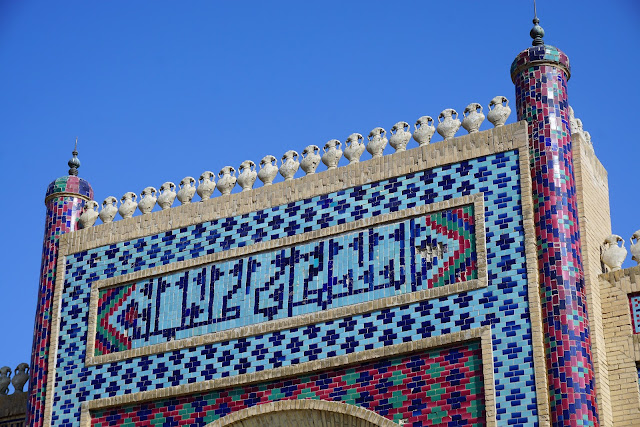On our way out of Bukhara, we stopped at two historical sites: a royal summer palace and a Sufi mausoleum.
In the mid-19th century, the Emir of Bukhara (a descendant of Genghis Khan) decided he needed a place to escape the heat, to he asked his wise men where to build. They told him to kill and quarter a lamb, and then to put each quarter in a different location. Build where the meat stays fresh the longest. He did exactly that.
While his summer palace did not survive, a second one was built on the same site later in the 19th century. The Emir at the time had a beloved wife Sitora who died, so he named the palace after her:
Sitorai Mokhi Khosa, translated as "Star, like the Moon." The front gate, a fusion of central Asian and Russian design, still stands:
Apparently it wasn't fancy enough for the grandson of that emir, because when he inherited the throne, he built a third palace next to the old one. It was finished in 1917. Unfortunately, Russia took over Bukhara in 1920, and the emir fled to Afghanistan, where he lived out the rest of his life and died in 1944.
These days the palace serves as a museum of fine arts. As in days past, peacocks roam freely around the grounds:
There were many handmade items on display and for sale, including the ubiquitous
suzanis, or embroidered tablecloths/wall hangings. In fact, there were quite a number of desperate artisans there, trying to sell their creations, but there were few if any buyers. We had been exposed to these products for days and had already filled our luggage with similar items. However, I think the quality and prices at the palace were as good and probably better than in the city.

























